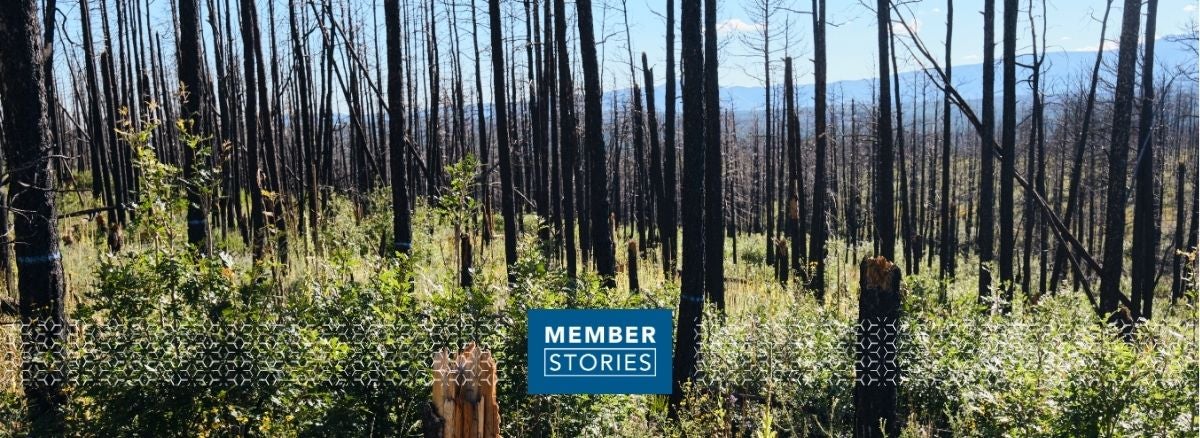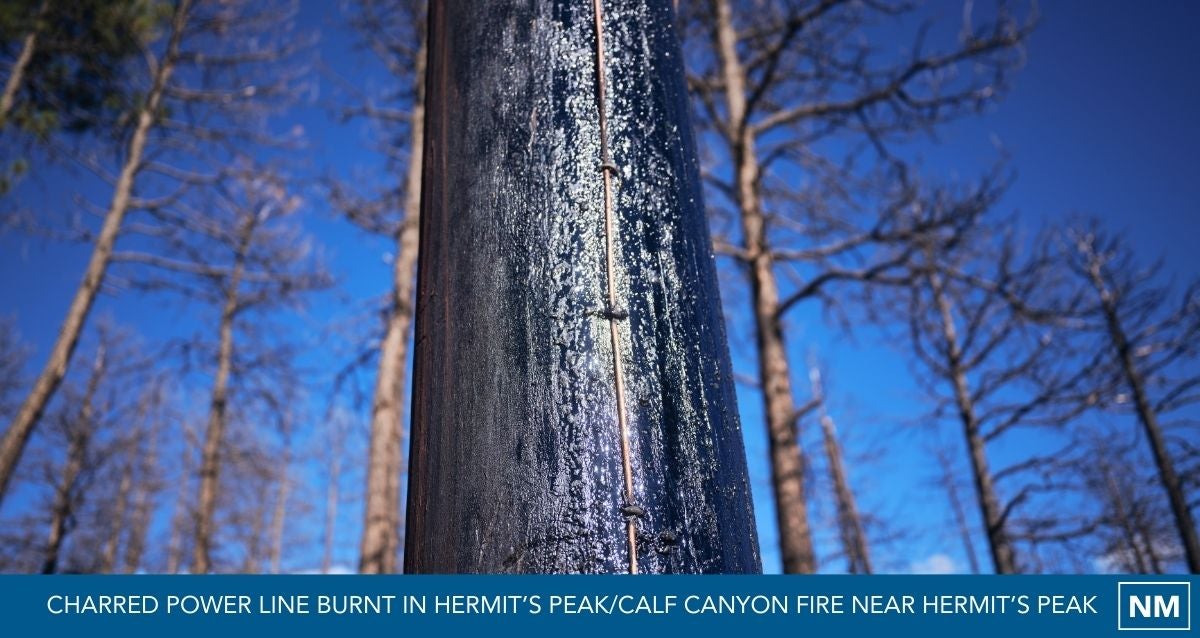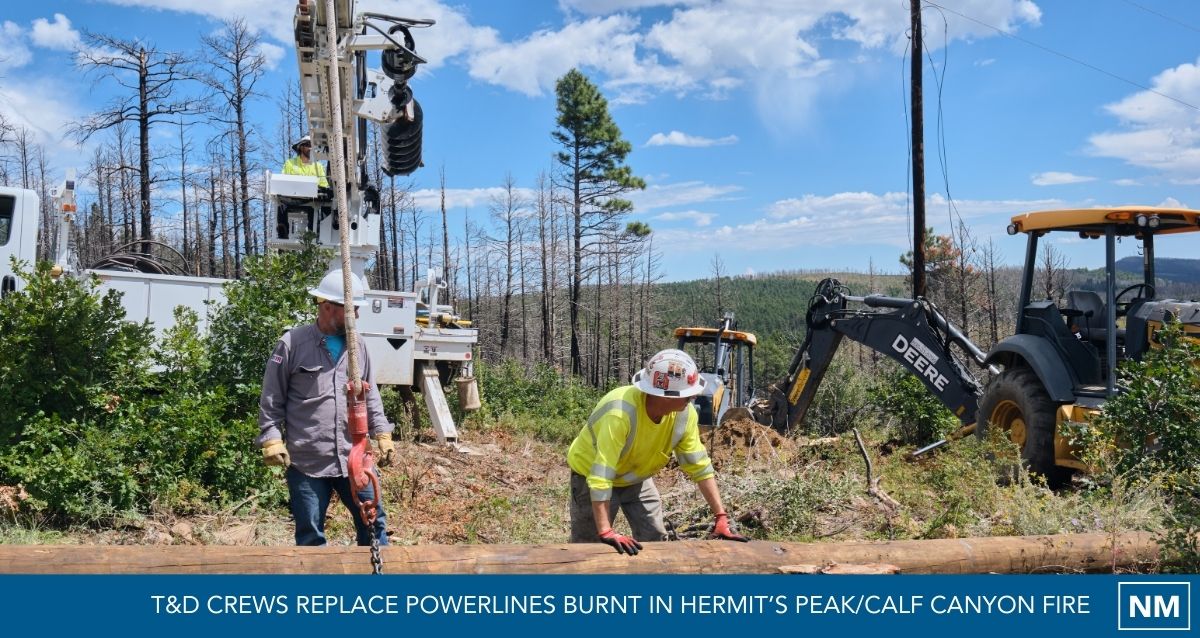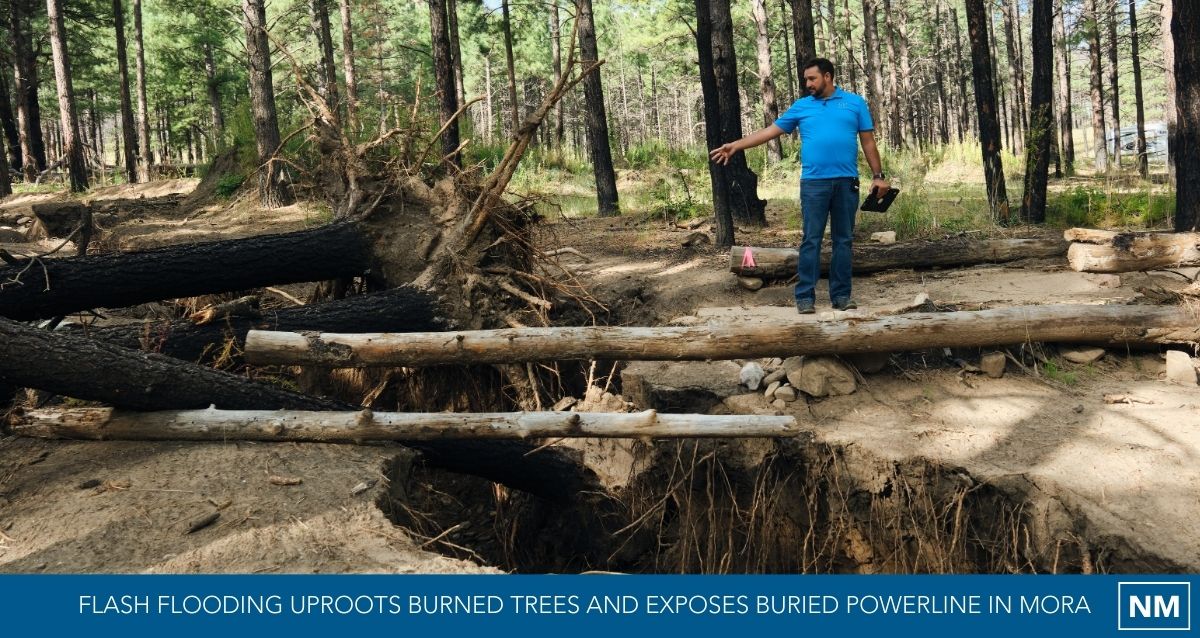
Posted 9/30/2025
The Fight Beyond the Fire: A Story of Cooperative Resilience
While driving home on April 6, 2022, Les Montoya noticed smoke on the horizon.
Seeing smoke in this wildfire-prone area of New Mexico immediately spurred the General Manager of Tri-State member Mora-San Miguel Electric Cooperative (MSMEC) into action. “My first thought was, I need to get in touch with my staff to see if they know about the fire --- and they did. I asked about the progress, and they said it was burning pretty heavy. I thought, oh man, we're going to be in for some damage here.”
No one could have predicted how much devastation there would be after this prescribed burn merged with an underground, holdover pile burn and created the Hermit’s Peak/Calf Canyon fire. In four months, it destroyed at least 900 structures (including 433 homes), over 27,000 people were ordered to evacuate, and more than 340,000 acres burned making it the largest wildfire in the history of New Mexico.
The Role of Electric Cooperatives During a Wildfire
When wildfires strike rural communities, electric cooperatives become a vital part of the emergency response. Even though their role is often invisible to the public, it’s indispensable to the safety and recovery of the region.
Montoya recalls being contacted immediately by the incident command center. “They wanted to know where our power lines were,” he said. “So we responded, but we also took position in the command center.” By embedding himself in the heart of the emergency response, Montoya ensured that his crews received real-time updates and could act quickly on requests from fire officials.
One of the most critical tasks was de-energizing power lines in areas threatened by fire. “Some community members were not pleased,” Montoya admitted, “but it was a safety net.” Live power lines in wildfire zones pose a serious hazard to linemen and firefighters. Aerial crews must avoid power lines during water or slurry drops, and ground teams risk electrocution if lines fall or equipment fails.
By cutting power, MSMEC helped create a safer environment for emergency responders to do their jobs. Strategic de-energization isolates vulnerable assets and prioritizes restoration where it matters most. While disruptive, these shutoffs are a necessary part of modern wildfire response. Cooperatives are increasingly using data-driven models to optimize when and where to shut off power to minimize both fire risk and outage impact.

The Aftermath of Containment
After four months of intense fighting, the Hermit’s Peak/Calf Canyon fire was declared contained on August 21, 2022, but the battle was far from over.
For nearly 40% of that year, MSMEC conducted their regular business and actively shielded their community from a wildfire. Every single employee of the co-op rose to the challenge, while going above and beyond to protect critical infrastructure and restore power quickly. This was all done while dealing with the threat, or devastation, of losing their own homes.
Even after the Fire Management Team left and the State of Emergency was lifted, this area of northern New Mexico was physically and emotionally changed. Despite the odds, MSMEC didn’t wait for help. The cooperative’s response has been nothing short of heroic, but resilience has its limits. Without federal support, the burden of recovery fell on a small team with limited resources and a community that had already lost so much.

Assessing the Damage
The need to assess damage began before the fire was fully contained. Getting a clear picture of the destruction was essential not only for planning repairs, but also for securing federal disaster relief. MSMEC contracted Transmission and Distribution Services (T&D Services), an Albuquerque-based firm, to lead the effort.
“We talked to Les Montoya on a Thursday,” said Adam Roybal, Distribution Manager at T&D. “I had crews here on Saturday and we didn’t leave for two months straight, just assessing the damage.”
Roybal and his team walked the entire burn scar, inspecting every pole, meter, and line while the fire was still active in places, with hot pockets smoldering nearby. The scale of the damage was staggering: 270 miles of electric infrastructure had to be evaluated and eventually rebuilt. Material shortages, driven by concurrent hurricanes, made the task even harder. “You couldn’t get poles. Prices were way up. And I just thought, how am I going to actually do this?” said Roybal.
The damage assessment wasn’t just about logistics — it was the foundation for securing federal aid. These organizations spent nine months writing documentation and justifications about why the cooperative needed significant recovery funds.
Financial Strain and Strategic Planning
After the fire was contained, with only 28 employees spread across two offices in Mora and Pecos, the cooperative was tasked with managing a disaster of unprecedented scale. “It’s difficult for a small operation like this to deal with a situation like we’re dealing with today,” Montoya said. That funding was essential to rebuilding MSMEC’s electric system, but he knew he didn’t have the luxury of waiting for those funds to be secured.
The financial strain was immediate and intense. Contractors began submitting large invoices for emergency repairs and reconstruction and the cooperative didn’t have the cash flow to cover them. “I had to borrow money initially,” Montoya explained. “We don’t have the resources within our operation to cover expenses associated with what we’re dealing with.”
To navigate the complex federal aid process, the cooperative also hired an attorney to file a claim under the Hermit’s Peak/Calf Canyon Fire Assistance Act, ensuring they had legal support to pursue emergency public assistance funds. Montoya’s foresight and leadership helped the cooperative provide FEMA with upfront damage assessments and cost estimates — a key step in securing the funding needed to rebuild nearly 40% of their electric system. “The electric system has to be up today. It can’t be up tomorrow,” he said. That urgency drove every decision, every late night, and every mile walked in the burn scar.

The Threat that Lingers
The fire has been out for over three years, but its consequences are far from over. When land burns, it loses its ability to absorb water, so every rainstorm carries the threat of flash flooding. These floods tear through roads, damage utility poles, and erode the watershed that supplies drinking water to the area.
On top of that, another on-going threat comes from fire-killed trees, often referred to as danger trees. These trees may remain standing for a year or two after a wildfire, appearing stable but rotting on the inside. As their structural integrity fails, they pose serious risk. “It’s a race against time,” said Brent Racher, Senior Project Manager for the Hazard Tree project at T&D Services. “If we don't take care of them now, we're going to be taking care of them in two or three more years.”
Racher, trained as a fire ecologist and fire behavior analyst, has spent his career working in forests and watersheds across the country. He emphasized that the post-fire landscape is still volatile. “We’re not past this,” he said.
The danger trees not only threaten electric infrastructure but also act as fuel for future fires, especially as they dry out and collapse into dense piles of debris. Managing these hazards is a long-term effort — one that will span generations. “My kids will still be working on it,” Racher said. “My grandkids will probably see a forest if we remove the trees that have been killed.”
The Human Cost
Behind every downed line and washed-out road is a crew member risking their life to restore power. MSMEC lineworkers and contractors work year-round removing trees, fixing lines, and completing other types of dangerous work. Many crew members saw their own homes destroyed and witnessed the heartbreak firsthand, yet they still show up every day to rebuild.
“If I could speak directly to all the people and more in these counties, I would say that this is your co-op and we are working every day to return safe and reliable power to you,” added Racher.
The fight beyond the fire is real and it’s far from over because recovery doesn’t end when the flames go out. But through it all, there is hope for a stronger, more resilient future thanks to the people showing up to do the hard work today.
--
About Tri-State
Tri-State is a power supply cooperative, operating on a not-for-profit basis, serving electric distribution cooperatives and public power district member-owners in four states. Together with our members, we deliver reliable, affordable and responsible power to more than a million electricity consumers across nearly 200,000 square miles of the West. Visit www.tristate.coop.
Blog Posts

Common Summer Electrical Problems to Avoid

Outdoor Cooking with Electric Grills

Earth Day 2021 Energy Saving Tips

Home Maintenance Checklist for Spring

The Surge of Electric Vehicles in 2021

Spring Road Trip Tips in Your EV

Electric Vehicles in Colorado: How Tri-State is Helping Members Transition

Electric Trucks May Be the Future for The Rockies

